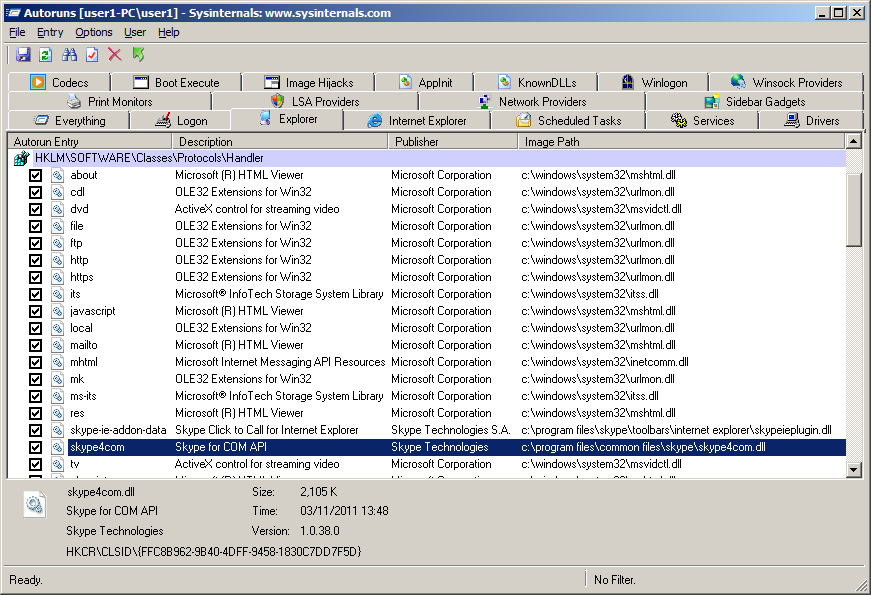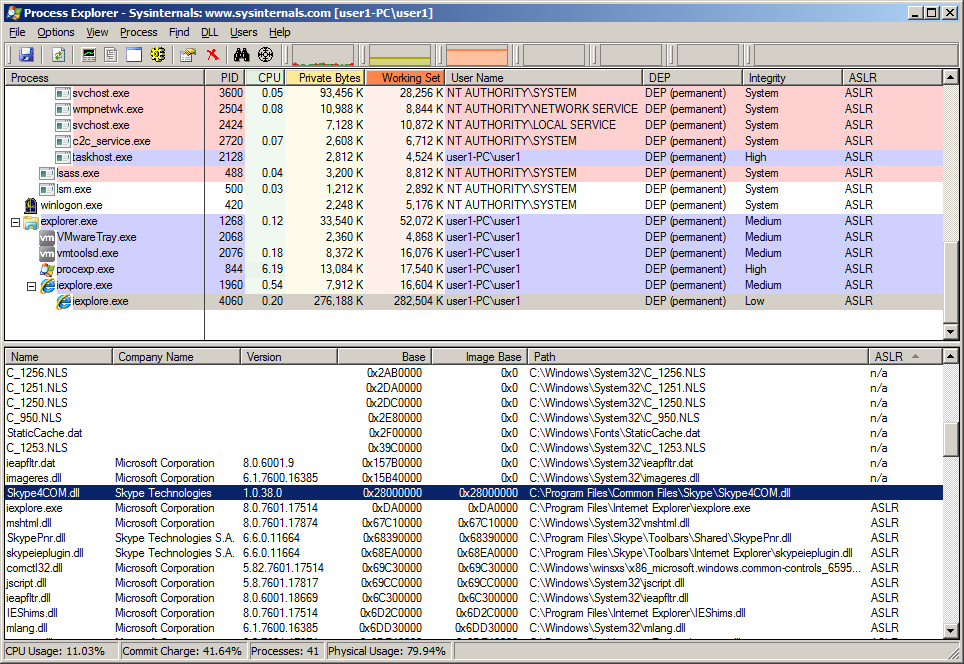- Ubuntu 上可以安装ms sqlserver?(不能上网2)
修炼成精
ubuntusqlserverlinux
如果您有一台可以上网的Windows电脑,您可以利用它来下载所需的SQLServer安装包和依赖包,然后将这些包传输到无法上网的Ubuntu服务器上进行离线安装。以下是详细的步骤:步骤1:在Windows电脑上下载所需的软件包安装WSL(WindowsSubsystemforLinux):如果您还没有安装WSL,可以按照以下步骤安装:打开PowerShell并运行以下命令以启用WSL:powers
- Goose开源程序本地机上 AI 代理,能够从头到尾自动执行复杂的开发任务。Goose 不仅可以提供代码建议,还可以自主构建整个项目、编写和执行代码、调试故障、编排工作流程以及与外部 API 交互
struggle2025
策略模式人工智能交互
一、软件下载文末提供程序和源码下载Goose是您的机上AI代理,能够从头到尾自动执行复杂的开发任务。Goose不仅可以提供代码建议,还可以自主构建整个项目、编写和执行代码、调试故障、编排工作流程以及与外部API交互。无论您是在构建想法原型、优化现有代码,还是管理复杂的工程管道,goose都能适应您的工作流程并精确执行任务。goose专为实现最大的灵活性而设计,可与任何LLMAPI配合使用,并与支持
- Springboot中的@ConditionalOnBean注解:使用指南与最佳实践
上官美丽
javaspringbootjavamybatis
在使用SpringBoot进行开发时,大家应该都听说过条件注解(ConditionalAnnotations)。其中的@ConditionalOnBean注解就很有趣,它帮助开发者在特定条件下创建和注入Bean,让你的应用更加灵活。今天就来聊聊这个注解的使用场景、工作原理以及最佳实践!什么是@ConditionalOnBean注解?@ConditionalOnBean是SpringBoot中提供的
- 贪心算法:将数组和减半的最少操作次数
神里流~霜灭
贪心算法精讲贪心算法算法数据结构c语言c++动态规划
题目描述:给你一个正整数数组nums。每一次操作中,你可以从nums中选择任意一个数并将它减小到恰好一半。(注意,在后续操作中你可以对减半过的数继续执行操作)请你返回将nums数组和至少减少一半的最少操作数。示例1:输入:nums=[5,19,8,1]输出:3解释:初始nums的和为5+19+8+1=33。以下是将数组和减少至少一半的一种方法:选择数字19并减小为9.5。选择数字9.5并减小为4.
- 前端面经分享(25/03/19)
CreatorRay
前端面试前端面试
北京一家做协同办公软件出海的公司,技术一面,20k-40k,要求3-5年详细聊了一下上家公司的项目上家公司的项目是不做了吗,离职原因是什么,你觉得公司的这个产品怎么样在做AI类的业务时,作为前端感觉跟常规业务有什么区别详细聊了一下上上家公司的项目细节讲一下项目里用编辑器做了什么事遇到过什么难解决的问题项目里提供的UI自动化的功能是怎么做的聊了一下写博客的事情有没有了解过浏览器底层的东西最近在研究或
- DataEase二开记录--踩坑和详细步骤(一)
风_间
DataEase数据库mysqljava
最近在看DataEase,发现挺好用的,推荐使用。用的过程中萌生了二开的想法,于是自己玩了玩,并做了一些记录。开发环境问题下载源码,选稳定版本的,本案例是1.17.0版本。下载地址开源社区-FIT2CLOUD飞致云数据库配置数据库初始化:DataEase使用MySQL数据库,推荐使用MySQL5.7版本。同时DataEase对数据库部分配置项有要求,请参考下附的数据库配置,修改开发环境中的数据库配
- 常用的pdf技术有哪些?--笔记
我不是彭于晏灬
pdf笔记
常用的pdf技术有哪些?1.iTextPDF:iText是著名的开放项目,是用于生成PDF文档的一个java类库。通过iText不仅可以生成PDF或rtf的文档,而且可以将XML、Html文件转化为PDF文件。Openoffice:openoffice是开源软件且能在windows和linux平台下运行,可以灵活的将word或者Excel转化为PDF文档。JasperReport:是一个强大、灵活
- Onlyoffice 更新字体
acheding
开源性能优化
复制Windows字体包,即C:\Windows\Fonts文件夹中字体。进入onlyOffice容器dockerexec-itonlyofficebash进入字体包目录cd/var/www/onlyoffice/documentserver/core-fonts删除所有字体库rm-rf\*进入字体缓存目录cd/var/www/onlyoffice/documentserver/fonts删除所有
- cocos2dx : 解决中文乱码问题
^随风~~
Cocos2d-xC++乱码
在使用cocos2dx的时候,代码里面使用了中文或者是在cocosstudio编辑器里面使用了中文,显示的时候会出现乱码问题,下面提供几个解决方案:方案一:最前面加上命令:#pragmaexecution_character_set("utf-8")方案二:使用XML文件:问题与解决方法在windows环境下使用visualstudio开发cocos2d-x,由于visualstudio默认编码为
- 颠覆想象,余承东官宣,华为3月将推全球首款原生鸿蒙新形态手机
佳晓晓
智能手机python华为scikit-learndjango
家人们,2月24日这一天,科技圈又被华为投下了一颗重磅炸弹!华为常务董事、终端BG董事长、智能汽车解决方案BU董事长余承东发布视频预告,2025年3月,华为将推出一款全新形态的手机,而且它是全球首款为原生鸿蒙而生的产品!这消息一放出来,各大科技论坛、社交平台瞬间就炸了锅,大家都在疯狂猜测这款手机到底长啥样,会有啥黑科技。其实,余承东之前就多次暗示过今年会有让人意想不到的产品问世。早在去年12月25
- 最完整的webpack Dll打包与采坑总结
仰望星空的代码
Vue.js踩坑记vue.jswebpackdll打包打包优化
webpack已经成为前端主流的项目打包工具,对于前端开发必不可少。在前端项目依赖第三方库过多,项目比较大文件比较多时,webpack打包的速度也会被拖成蜗牛,是时候优化一下webapck的打包速度了。在优化打包速度方面有不少方法方式,其中一个比较重要的方式是DllPlugin。DllPlugin把第三方库打包成动态链接库(动态链接库:windows系统中库文件概念,这里是借用了这一概念。),Dl
- H5语音识别功能(Web Speech API+科大讯飞)
辣辣1
语音识别前端
H5语音识别效果图:方案一:WebSpeechAPI(免费,IE浏览器可用,谷歌浏览器不可用)方案一:WebSpeechAPI开始停止识别结果:{{finalTranscript}}{{interimTranscript}}import{ref,onMounted,onBeforeUnmount}from"vue";constisSupported=ref(false);constisRecord
- Beekeeper Studio:高颜值且免费的SQL开发工具
开源项目精选
sql数据库
BeekeeperStudio是一款免费开源的SQL开发和数据库管理工具,具有美观高效、简单易用的特点。BeekeeperStudio基于Vue.js开发,遵循MIT开源协议,支持Windows、Linux以及macOS平台。Stars数17842Forks数1170主要特点安全连接:除了正常的连接,也可以使用SSL加密连接或通过SSH隧道连接;SQL自动补全:代码编辑器支持语法高亮和表名自动补全
- 使用 Python 的 pyttsx3 库进行文本转语音
Bingjia_Hu
python开发语言pyttsx3
1.什么是pyttsx3?1.1pyttsx3是一个Python库,它可以将文本转换为语音。与其他文本转语音库(如gTTS)不同,pyttsx3不依赖于网络服务,它使用本地的TTS(Text-to-Speech)引擎,这使得它在离线状态下也能正常工作1.2pyttsx3支持多平台(Windows、Linux和macOS),且可以对语音的音量、语速以及语音类型等进行控制2.安装pyttsx3要使用p
- 都快3202年了,你还不会用Java生成计算机统一标识符
Heping_Ge2333
java
Java生成计算机统一标识符计算机统一标识符的概念什么是计算机统一标识符?计算机统一标识符就相当于每台电脑每个系统的“身份证”。它是唯一的。通常,计算机统一标识符是根据电脑的硬件情况(主板、cpu的序列号,mac地址)和系统情况(windows/linux/unix)生成的。Java语言的实现下面这段代码浅浅的实现了计算机统一标识符importlombok.Data;importlombok.ex
- Ubuntu Qt: no service found for - “org.qt-project.qt.mediaplayer“
wkm956
qt开发语言ubuntu
1、前言在一次项目过程中,因项目需求,需要将windows开发的Qt项目迁移到ubuntu系统中,且在某个功能项中需要播放音频,在windows系统中能够正常运行,但在ubuntu系统中却显示defaultServiceProvider::requestService():noservicefoundfor-"org.qt-project.qt.mediaplayer"错误,在网上查找资料后解决问
- python安装scipy库出错_解决scipy安装(pip install scipy)失败,以及其他问题
weixin_39663933
解决scipy安装(pipinstallscipy)失败,以及其他问题解决:1.在scipy官方库中并没有适合Windows的python3.6相关版本,故需要在网址http://www.lfd.uci.edu/~gohlke/pythonlibs/#scipy下载适合的版本,下载如:scipy‑0.19.1‑cp36‑cp36m‑win32.whl2.Windows中scipy安装成功后,还会存
- ✨❤️CSDN标题党❤️,创意无极限,那不直接全网站都花的飞起?
少年,又是你
iconsui设计搜索引擎大数据百度
这只是一张图。❤️CSDN标题党❤️想法由来如何化为己用总结想法由来那这个想法之初呢,是因为我看到好多博主的标题啊,文章中都存在一些精美的小图片,那我身为一个男生看这些都有些心动啊,实在是精美。那的确为了流量,大家也都是攒足了劲。那我就在想,这些是什么呢?我一搜发现,原来是表情符号。那我不知道你们的电脑是怎么样的,我反正只要按了windows键+句号(.)即可在任何应用程序中使用表情符号。好使的不
- 在Qt代码中使用Windows事件机制WaitForMultipleObjects、SetEvent
令狐掌门
深入浅出C++Qt开发技术qtwindows开发语言SetEvent
在Qt开发客户端时,经常使用信号槽来处理控件或窗口之间的事件,如果是Windows系统,也可以用windows事件来代替Qt的信号槽,本篇博客来介绍这种用法。首先需要介绍本篇本篇博客需要用到的几个WindowsAPI:一、需要用到的WindowsAPIWaitForMultipleObjectsWaitForMultipleObjects是WindowsAPI中一个用于同步操作的函数。它主要用于等
- 安全地自动重新启动 Windows 资源管理器Bat脚本
小云很优秀
开发工具安全windowsbatch命令microsoft
安全地自动重新启动Windows资源管理器脚本可以直接运行的Windows批处理脚本,用于安全地自动重新启动Windows资源管理器。该脚本会在杀死资源管理器之前检查是否有其他进程正在使用资源管理器相关的文件。Bat脚本@echoofftitle资源管理器安全重启工具color0A::检查是否以管理员权限运行netsession>nul2>&1if%errorLevel%neq0(echo此脚本需
- Python个人学习笔记(17):模块(sys、pickle&json)
NEET_LH
樵夫老师Python零基础课程个人学习笔记python学习笔记
五、sys模块sys.exit():退出while1:print(123)sys.exit(0)#程序退出,0是正常退出,1是非正常退出,记录在日志中sys.version:得到当前解释器的运行环境sys.platform:运行平台,win32=windows代码:print(sys.version)print(sys.platform)结果:3.13.0(tags/v3.13.0:60403a5
- AC220V交流降DC直流5V低成本电源ICWD5202
F13316892957
单片机嵌入式硬件stm32
WD5202-类型:高效、低成本、非隔离的降压转换芯片。-特点:采用SOT23-3封装,可将交流80~265V的电压转换为稳定的5V输出,最大输出电流可达200mA。内部集成500V的MOS管,具备VDD欠压锁定、短路保护、逐脉冲电流限制、过载保护、过压保护和温度保护等功能。-应用领域:广泛应用于各种智能家电模块、智能家电插座、MCU供电、可控硅控制等领域。BAS5202VH6327XTSA1-类
- Electron对接语音唤醒Windows SDK
蚂蚁二娘
electronwindowsc++
一、项目主要依赖vuevue-cli-plugin-electron-builderelectronffi-napinodejs操作c++的dll库ref-napic++类型转换js-audio-recorder录音插件二、下载SDK设置好唤醒词后,下载windowsSdk,项目需要/bin目录下的msc_x64.dll和msc.dll(分别是64位和32位的dll,按需使用),以及/bin/ms
- 批处理脚本基础知识快速掌握
感叹号的豆浆
c++
一、批处理脚本概述定义批处理脚本是一种基于命令行的自动化脚本语言,通过.bat或.cmd文件保存,由Windows系统的cmd.exe解释器执行。核心作用自动化重复性任务(如文件操作、系统配置)批量处理文件(搜索、复制、删除)集成命令行工具(如ping、netstat)简单的系统管理(服务控制、注册表操作)执行环境原生支持:WindowsCMD.EXEPowerShell兼容:可通过&或call调
- 批处理脚本NTP服务Windows操作系统时间同步设置
感叹号的豆浆
windows自然语言处理
脚本如下:///创建时间同步服务@echooff@echooff&&@chcp65001>nulsetlocalenabledelayedexpansion::设置版本号set"o=cls&echo"&set“z=&&echo.&echo按任意键或等待15秒后自动退出本界面&&timeout/t15&&exit”modeconlines=10cols=60&&netsession1>NUL2>NU
- 零基础怎么开始学网络安全(非常详细)零基础入门到精通,收藏这一篇就够了
程序员羊羊
web安全安全网络php学习
一、学习建议1.了解基础概念:开始之前,了解网络安全的基本概念和术语是很重要的。你可以查找网络安全入门教程或在线课程,了解网络安全领域的基本概念,如黑客、漏洞、攻击类型等。2.网络基础知识:学习计算机网络基础知识,了解网络通信原理,不同网络协议(如TCP/IP)的工作方式,以及网络拓扑结构等。3.操作系统知识:了解常见的操作系统,特别是Windows和Linux。掌握基本的命令行操作和系统管理技能
- 【C++篇】排队的艺术:用生活场景讲解优先级队列的实现
far away4002
C++c++stl优先级队列向下(向上)调整算法
文章目录须知欢迎讨论:如果你在学习过程中有任何问题或想法,欢迎在评论区留言,我们一起交流学习。你的支持是我继续创作的动力!点赞、收藏与分享:觉得这篇文章对你有帮助吗?别忘了点赞、收藏并分享给更多的小伙伴哦!你们的支持是我不断进步的动力!分享给更多人:如果你觉得这篇文章对你有帮助,欢迎分享给更多对C++感兴趣的朋友,让我们一起进步!深入理解与实现:C++优先级队列的模拟实现1.引言在算法和数据结构中
- 【C++篇】深入剖析C++ Vector底层源码及实现机制
far away4002
C++c++开发语言vectorvisualstudiovscode
文章目录须知欢迎讨论:如果你在学习过程中有任何问题或想法,欢迎在评论区留言,我们一起交流学习。你的支持是我继续创作的动力!点赞、收藏与分享:觉得这篇文章对你有帮助吗?别忘了点赞、收藏并分享给更多的小伙伴哦!你们的支持是我不断进步的动力!分享给更多人:如果你觉得这篇文章对你有帮助,欢迎分享给更多对C++感兴趣的朋友,让我们一起进步!全面剖析vector底层及实现机制接上篇:【C++篇】探索STL之美
- 一款适用于 Windows 、Mac 和 Linux 的屏幕录制与截图软件。
Mbblovey
开发语言开源软件电脑java
Screenrec是一款适用于Windows、Mac和Linux的屏幕录制与截图软件。软件本身可以免费使用,只需要登录即可使用全部功能。当咱们打开软件后,电脑右边就会出现一个小漂浮窗。点击上方的图标就能一键开启视频录制、截屏等功能。Screenrec很有意思的是可以在开始录制屏幕的同时录制咱们的网络摄像头视频和麦克风音频。在录制完成后大家可能会发现右下角软件会给大家发出一个提醒。这就是它的另一个特
- python-56-基于Vue和Flask进行前后端分离的项目开发示例实战
皮皮冰燃
python3pythonvue.jsflask
文章目录1创建Vue前端项目1.1运行demo1.2实现需求2flask部署上述dist(前后端未分离)2.1代码app.py2.2运行访问3nginx部署(前后端分离)3.1nginx前端服务3.3.1windows安装nginx3.3.2修改nginx.conf配置文件3.3.3启动nginx3.3.3停止nginx3.2启动后端服务3.2.1app.py(去除前端渲染)3.2.2启动flas
- Algorithm
香水浓
javaAlgorithm
冒泡排序
public static void sort(Integer[] param) {
for (int i = param.length - 1; i > 0; i--) {
for (int j = 0; j < i; j++) {
int current = param[j];
int next = param[j + 1];
- mongoDB 复杂查询表达式
开窍的石头
mongodb
1:count
Pg: db.user.find().count();
统计多少条数据
2:不等于$ne
Pg: db.user.find({_id:{$ne:3}},{name:1,sex:1,_id:0});
查询id不等于3的数据。
3:大于$gt $gte(大于等于)
&n
- Jboss Java heap space异常解决方法, jboss OutOfMemoryError : PermGen space
0624chenhong
jvmjboss
转自
http://blog.csdn.net/zou274/article/details/5552630
解决办法:
window->preferences->java->installed jres->edit jre
把default vm arguments 的参数设为-Xms64m -Xmx512m
----------------
- 文件上传 下载 解析 相对路径
不懂事的小屁孩
文件上传
有点坑吧,弄这么一个简单的东西弄了一天多,身边还有大神指导着,网上各种百度着。
下面总结一下遇到的问题:
文件上传,在页面上传的时候,不要想着去操作绝对路径,浏览器会对客户端的信息进行保护,避免用户信息收到攻击。
在上传图片,或者文件时,使用form表单来操作。
前台通过form表单传输一个流到后台,而不是ajax传递参数到后台,代码如下:
<form action=&
- 怎么实现qq空间批量点赞
换个号韩国红果果
qq
纯粹为了好玩!!
逻辑很简单
1 打开浏览器console;输入以下代码。
先上添加赞的代码
var tools={};
//添加所有赞
function init(){
document.body.scrollTop=10000;
setTimeout(function(){document.body.scrollTop=0;},2000);//加
- 判断是否为中文
灵静志远
中文
方法一:
public class Zhidao {
public static void main(String args[]) {
String s = "sdf灭礌 kjl d{';\fdsjlk是";
int n=0;
for(int i=0; i<s.length(); i++) {
n = (int)s.charAt(i);
if((
- 一个电话面试后总结
a-john
面试
今天,接了一个电话面试,对于还是初学者的我来说,紧张了半天。
面试的问题分了层次,对于一类问题,由简到难。自己觉得回答不好的地方作了一下总结:
在谈到集合类的时候,举几个常用的集合类,想都没想,直接说了list,map。
然后对list和map分别举几个类型:
list方面:ArrayList,LinkedList。在谈到他们的区别时,愣住了
- MSSQL中Escape转义的使用
aijuans
MSSQL
IF OBJECT_ID('tempdb..#ABC') is not null
drop table tempdb..#ABC
create table #ABC
(
PATHNAME NVARCHAR(50)
)
insert into #ABC
SELECT N'/ABCDEFGHI'
UNION ALL SELECT N'/ABCDGAFGASASSDFA'
UNION ALL
- 一个简单的存储过程
asialee
mysql存储过程构造数据批量插入
今天要批量的生成一批测试数据,其中中间有部分数据是变化的,本来想写个程序来生成的,后来想到存储过程就可以搞定,所以随手写了一个,记录在此:
DELIMITER $$
DROP PROCEDURE IF EXISTS inse
- annot convert from HomeFragment_1 to Fragment
百合不是茶
android导包错误
创建了几个类继承Fragment, 需要将创建的类存储在ArrayList<Fragment>中; 出现不能将new 出来的对象放到队列中,原因很简单;
创建类时引入包是:import android.app.Fragment;
创建队列和对象时使用的包是:import android.support.v4.ap
- Weblogic10两种修改端口的方法
bijian1013
weblogic端口号配置管理config.xml
一.进入控制台进行修改 1.进入控制台: http://127.0.0.1:7001/console 2.展开左边树菜单 域结构->环境->服务器-->点击AdminServer(管理) &
- mysql 操作指令
征客丶
mysql
一、连接mysql
进入 mysql 的安装目录;
$ bin/mysql -p [host IP 如果是登录本地的mysql 可以不写 -p 直接 -u] -u [userName] -p
输入密码,回车,接连;
二、权限操作[如果你很了解mysql数据库后,你可以直接去修改系统表,然后用 mysql> flush privileges; 指令让权限生效]
1、赋权
mys
- 【Hive一】Hive入门
bit1129
hive
Hive安装与配置
Hive的运行需要依赖于Hadoop,因此需要首先安装Hadoop2.5.2,并且Hive的启动前需要首先启动Hadoop。
Hive安装和配置的步骤
1. 从如下地址下载Hive0.14.0
http://mirror.bit.edu.cn/apache/hive/
2.解压hive,在系统变
- ajax 三种提交请求的方法
BlueSkator
Ajaxjqery
1、ajax 提交请求
$.ajax({
type:"post",
url : "${ctx}/front/Hotel/getAllHotelByAjax.do",
dataType : "json",
success : function(result) {
try {
for(v
- mongodb开发环境下的搭建入门
braveCS
运维
linux下安装mongodb
1)官网下载mongodb-linux-x86_64-rhel62-3.0.4.gz
2)linux 解压
gzip -d mongodb-linux-x86_64-rhel62-3.0.4.gz;
mv mongodb-linux-x86_64-rhel62-3.0.4 mongodb-linux-x86_64-rhel62-
- 编程之美-最短摘要的生成
bylijinnan
java数据结构算法编程之美
import java.util.HashMap;
import java.util.Map;
import java.util.Map.Entry;
public class ShortestAbstract {
/**
* 编程之美 最短摘要的生成
* 扫描过程始终保持一个[pBegin,pEnd]的range,初始化确保[pBegin,pEnd]的ran
- json数据解析及typeof
chengxuyuancsdn
jstypeofjson解析
// json格式
var people='{"authors": [{"firstName": "AAA","lastName": "BBB"},'
+' {"firstName": "CCC&
- 流程系统设计的层次和目标
comsci
设计模式数据结构sql框架脚本
流程系统设计的层次和目标
- RMAN List和report 命令
daizj
oraclelistreportrman
LIST 命令
使用RMAN LIST 命令显示有关资料档案库中记录的备份集、代理副本和映像副本的
信息。使用此命令可列出:
• RMAN 资料档案库中状态不是AVAILABLE 的备份和副本
• 可用的且可以用于还原操作的数据文件备份和副本
• 备份集和副本,其中包含指定数据文件列表或指定表空间的备份
• 包含指定名称或范围的所有归档日志备份的备份集和副本
• 由标记、完成时间、可
- 二叉树:红黑树
dieslrae
二叉树
红黑树是一种自平衡的二叉树,它的查找,插入,删除操作时间复杂度皆为O(logN),不会出现普通二叉搜索树在最差情况时时间复杂度会变为O(N)的问题.
红黑树必须遵循红黑规则,规则如下
1、每个节点不是红就是黑。 2、根总是黑的 &
- C语言homework3,7个小题目的代码
dcj3sjt126com
c
1、打印100以内的所有奇数。
# include <stdio.h>
int main(void)
{
int i;
for (i=1; i<=100; i++)
{
if (i%2 != 0)
printf("%d ", i);
}
return 0;
}
2、从键盘上输入10个整数,
- 自定义按钮, 图片在上, 文字在下, 居中显示
dcj3sjt126com
自定义
#import <UIKit/UIKit.h>
@interface MyButton : UIButton
-(void)setFrame:(CGRect)frame ImageName:(NSString*)imageName Target:(id)target Action:(SEL)action Title:(NSString*)title Font:(CGFloa
- MySQL查询语句练习题,测试足够用了
flyvszhb
sqlmysql
http://blog.sina.com.cn/s/blog_767d65530101861c.html
1.创建student和score表
CREATE TABLE student (
id INT(10) NOT NULL UNIQUE PRIMARY KEY ,
name VARCHAR
- 转:MyBatis Generator 详解
happyqing
mybatis
MyBatis Generator 详解
http://blog.csdn.net/isea533/article/details/42102297
MyBatis Generator详解
http://git.oschina.net/free/Mybatis_Utils/blob/master/MybatisGeneator/MybatisGeneator.
- 让程序员少走弯路的14个忠告
jingjing0907
工作计划学习
无论是谁,在刚进入某个领域之时,有再大的雄心壮志也敌不过眼前的迷茫:不知道应该怎么做,不知道应该做什么。下面是一名软件开发人员所学到的经验,希望能对大家有所帮助
1.不要害怕在工作中学习。
只要有电脑,就可以通过电子阅读器阅读报纸和大多数书籍。如果你只是做好自己的本职工作以及分配的任务,那是学不到很多东西的。如果你盲目地要求更多的工作,也是不可能提升自己的。放
- nginx和NetScaler区别
流浪鱼
nginx
NetScaler是一个完整的包含操作系统和应用交付功能的产品,Nginx并不包含操作系统,在处理连接方面,需要依赖于操作系统,所以在并发连接数方面和防DoS攻击方面,Nginx不具备优势。
2.易用性方面差别也比较大。Nginx对管理员的水平要求比较高,参数比较多,不确定性给运营带来隐患。在NetScaler常见的配置如健康检查,HA等,在Nginx上的配置的实现相对复杂。
3.策略灵活度方
- 第11章 动画效果(下)
onestopweb
动画
index.html
<!DOCTYPE html PUBLIC "-//W3C//DTD XHTML 1.0 Transitional//EN" "http://www.w3.org/TR/xhtml1/DTD/xhtml1-transitional.dtd">
<html xmlns="http://www.w3.org/
- FAQ - SAP BW BO roadmap
blueoxygen
BOBW
http://www.sdn.sap.com/irj/boc/business-objects-for-sap-faq
Besides, I care that how to integrate tightly.
By the way, for BW consultants, please just focus on Query Designer which i
- 关于java堆内存溢出的几种情况
tomcat_oracle
javajvmjdkthread
【情况一】:
java.lang.OutOfMemoryError: Java heap space:这种是java堆内存不够,一个原因是真不够,另一个原因是程序中有死循环; 如果是java堆内存不够的话,可以通过调整JVM下面的配置来解决: <jvm-arg>-Xms3062m</jvm-arg> <jvm-arg>-Xmx
- Manifest.permission_group权限组
阿尔萨斯
Permission
结构
继承关系
public static final class Manifest.permission_group extends Object
java.lang.Object
android. Manifest.permission_group 常量
ACCOUNTS 直接通过统计管理器访问管理的统计
COST_MONEY可以用来让用户花钱但不需要通过与他们直接牵涉的权限
D

